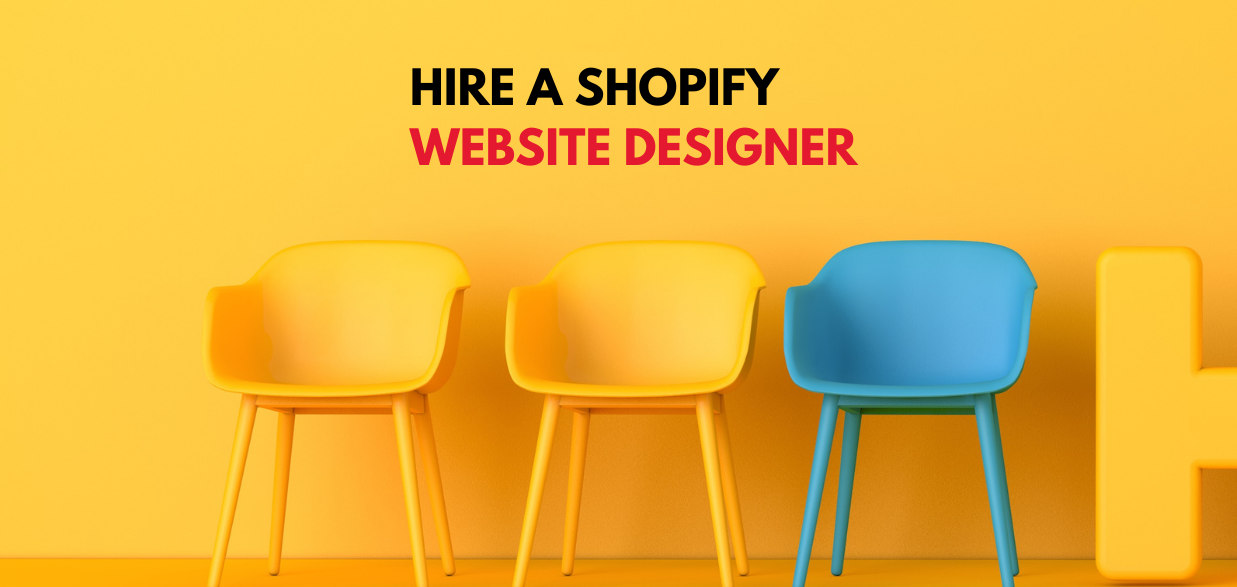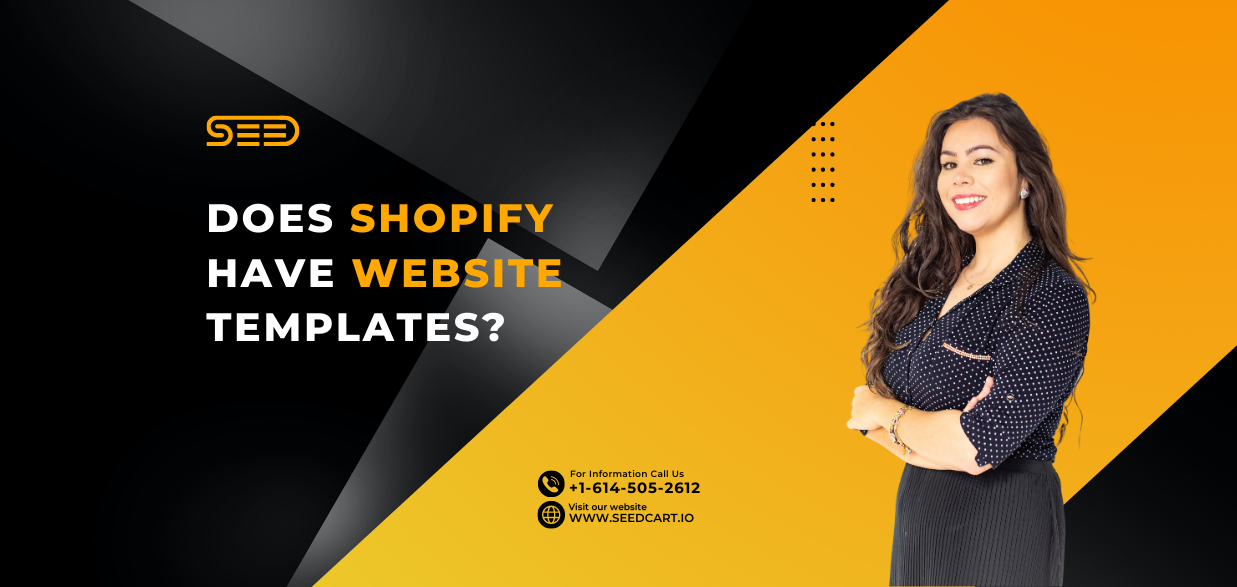Does Shopify Have Website Templates?
Shopify template is very important for your online store because it is the first thing that your visitors and potential customers notice when they visit your store. Because of this, theme customization should be done to make your store look beautiful and inviting and show that you are serious about it.
Shopify templates have many features:
- Mobile-friendly designs
- Easy-to-navigate layouts
- Customizable product pages
- Built-in blog capabilities
Many themes have built-in tools for creating blogs, which can be used as an avenue to showcase new products or services or to inform the public about the latest news in the industry. These blogs can also be integrated into other websites or social media accounts to increase brand recognition and awareness.
Additionally, certain themes feature built-in payment gateways that allow users to pay with a credit card or PayPal. These payment gateways can also be integrated with other shopping cart software such as Xcart or Zen cart.
If your business is based on selling products and services online, then you need a Shopify template to build your online store with ease. Shopify themes provide many benefits. They offer flexibility in design and functionality so that you can customize them according to your requirements.
Since almost anyone can build a website with Shopify, you might think that Shopify doesn’t have any templates for you to use for your eCommerce website. This is true if you were looking for a free template and didn’t want to pay for one.
Shopify has its templates.
Shopify has templates that are free, customizable, and easy to use. With over 70 free themes, you will have plenty to choose from. Shopify even has separate categories for different kinds of businesses: Fashion & Beauty; Food & Drink; Home & Garden; Arts & Crafts; Sport & Outdoors; Electronics & Computers; Accessories; Business Supplies. Each template has been designed by professional graphic designers with experience in building great-looking websites from other e-commerce stores.
There are templates you can customize
You can modify the content, images, and overall design of the template you choose to use. How much you can customize depends on which template you pick.
You cannot change the layout of your Shopify theme, but you can change many settings: colors, fonts, products per row, and more.
Some templates have many options for customization (like my personal favorite Debut), while others are simpler with fewer options (like Narrative).
You can save money by using a pre-made theme.
If you’re like most Shopify merchants, you’ll want to save money by using a pre-made theme. Shopify has hundreds of themes available, and many are free.
After installing your theme, it’s just a matter of customizing it to match your business and the look you want. You can change the colors and typography, add your logo and product images, and reorder sections of the page without needing to know HTML or CSS.
You also have access to all of Shopify’s features if you use a pre-made theme on your site. They ensure all our themes work well with our apps, so you have access to everything that makes running an online business easier — like integrating with MailChimp for email marketing or Oberlo for dropshipping products from AliExpress suppliers.
You should choose a pre-made theme over a custom-made one.
If you find a pre-made theme that fits your company’s image well, it’s in your best interest to go for that one. Custom themes are expensive and time-consuming, and unless you have a specific idea of what you want your website to look like, a pre-made theme should do the trick.
Shopify is known for its user-friendly platform, allowing store owners without coding experience to build their websites easily. In addition to the existing templates available on Shopify’s site, plenty of third-party templates is available online.
If none of those meet your needs or expectations, however, there is always the option of hiring someone to design a custom website for your store. Custom websites can be costly—even more so than using Shopify itself—but they will be designed specifically with your business in mind. It all depends on what you’re looking for and what kind of budget you have available.
Shopify themes will make your site look professional.
Shopify encourages you to invest in a premium theme, which we also recommend. Here’s why:
- A professional template is designed to be clean, clear, and easy to navigate.
- These themes are designed with ease of use and understanding in mind. They’ll have the necessary legalese and disclaimers that you may not think of otherwise.
- Themes are responsive (meaning they’re optimized for mobile).
Don’t let the theme take over your site – make it your own by changing the color scheme, adding videos or high-resolution photos, etc.
A unique template can hurt your business.
Many businesses are tempted to purchase the unique template they can find. After all, your business is unlike any other, so why should you want a website that looks like something else?
There are several reasons. A unique template can harm your business in more than one way. For example:
- It’s harder to get traffic to your site when it doesn’t look like everything else. Your customers need something familiar as a starting point to explore what you have to offer.
- SEO compatibility can be much harder with a unique template. While this isn’t always the case, it’s often true that the more basic and straightforward your design is, the easier it’ll be for search engines to understand what you’re trying to convey on each page of your site.
There are free templates available from Shopify.
Shopify does provide free website templates.
There are several free themes in the Shopify Theme Store that you can use with your store. These themes have been designed by Shopify’s design team and have been optimized for mobile devices and tablet computers. Best of all, most of the free themes are customizable, so you can add your content or make small changes to their design to help your business appear unique.
Once you’ve downloaded a theme from the Shopify Theme Store, it is completely free to use on a Shopify store and also easy to customize with your content. You are also free to download these themes and modify them before using them on any other platform such as WordPress or Blogger.
Choose a theme that makes sense for your business and brand.
If you’re looking for templates, there are a few things to keep in mind:
- Match your branding. If your store’s brand is sleek and trendy and the template you want feels like it has a rustic, country vibe, they might not be a good match.
- Choose one that enhances your brand. If you sell luxury products and the template looks cheap, it could hurt your business more than help it.
- Think about how it would work for your site. A great template for an online bookstore may not be right for an online clothing store or a blog about travel.
- Make sure the rest of your site is consistent with the template you want to use so that everything flows together seamlessly when customers visit your store or website.
Themes should be developed for eCommerce use.
In our opinion, the ideal theme should:
- Be designed to sell products. The primary purpose of your eCommerce store is to sell stuff, so your theme should help you make that happen as effectively as possible. For example, it should be visually appealing so customers will want to browse around the site and make purchases. It should also have a coherent look and feel and provide a good user experience. Customers can easily find what they’re looking for on your site without getting frustrated or bored by filler content or confusing navigation structures.
- Promote products effectively. A great theme won’t just help you sell stuff—it will also help you show off what you’re selling in the best light possible. This means it needs to have a catalog page layout that highlights product names and descriptions clearly (as well as product images). Also, it needs to have sections on each product page where you can enter details like shipping weight and return policies (this info helps both search engines and shoppers).
- Be easy to customize. Ideally, the theme will come with settings where users can easily change things like fonts and colors without needing any technical knowledge or coding skills (for example). It would also be nice if there were an easy way for users to change other website elements without having those changes affect the rest of their pages—that way, they don’t have any surprises when their themes update automatically every few months or years down the road!
Templates should be responsive to mobile devices.
Shopify has ready-made templates responsive to mobile devices. It is important to have a responsive template because more and more people are accessing the web from their smartphones. If your website does not respond well to mobile devices, you will lose potential customers. Here are three examples of Shopify’s responsive templates:
- Handy is an elegant and modern template that works seamlessly on any device your customer may be using! This template uses large images and bold fonts to effectively display your brand’s vision.
- Parallax is a theme that uses parallax scrolling effects and subtle animations to create an immersive shopping experience for your visitors, no matter what device they choose to use!
- Context is perfect for stores selling clothing, bags, or accessories because it allows you to display high-resolution images of your products in portrait orientation.
You can buy templates from other companies.
You have a few options. Shopify offers a wide variety of themes via the Shopify Theme Store, where you can browse and purchase custom-made templates. You can also find templates through 3rd party theme shops, Shopify experts, private sellers, and other eCommerce platforms and websites that offer template files for sale.
Also, note: some of the more advanced Shopify themes are only available by paying an additional monthly fee to “unlock” the full version (some free versions come bundled with very limited functionality). Be sure to do your research before purchasing any premium themes.
Templates should work with most browsers, including Safari, Chrome, Firefox, etc.
You should check to see if templates are compatible with the following:
- Any browser you have access to, such as Safari, Explorer, Chrome, Firefox, etc.
- All screen sizes and resolutions
- Mobile devices
In addition to making sure a template has these qualities, you should also ensure that it does not overwrite or erase your current content. Some people who have experience with web design might feel comfortable using a Shopify shop template; however, others may want to store all their information elsewhere. It is also important that you keep several backups of your original data if anything happens during the uploading process. Finally, if you are uncertain about whether or not a specific template will work for your business but want to try it out, you can always use Shopify’s free trial.
Shopify template tips
When creating a Shopify template, there are a few things to keep in mind, especially if you’d like your shop to be unique. Here are some of the most important ones:
When it comes to font size and color, consistency is key. If you choose one font size for all headings, stick with it, and do the same for colors.
The number of colors you use should be limited to three or fewer. If you’re using more than three, it can become overwhelming. Choose colors that complement each other.
For headings and text overlaid on top of images, use white lettering with a black outline to make sure that the words are legible.
Keep in mind that your site should be easy to navigate and read, no matter what device someone uses it on—mobile-friendly is a must!
Final words
The prices are pretty reasonable, and they’re a good option if you’re hoping to move your shop online. But it probably isn’t the best option out there. Their template system has some limitations and quirks that can make things frustrating. And ultimately, we think the limited number of templates limits the site’s ability to present you with creative options and truly show off your product.


